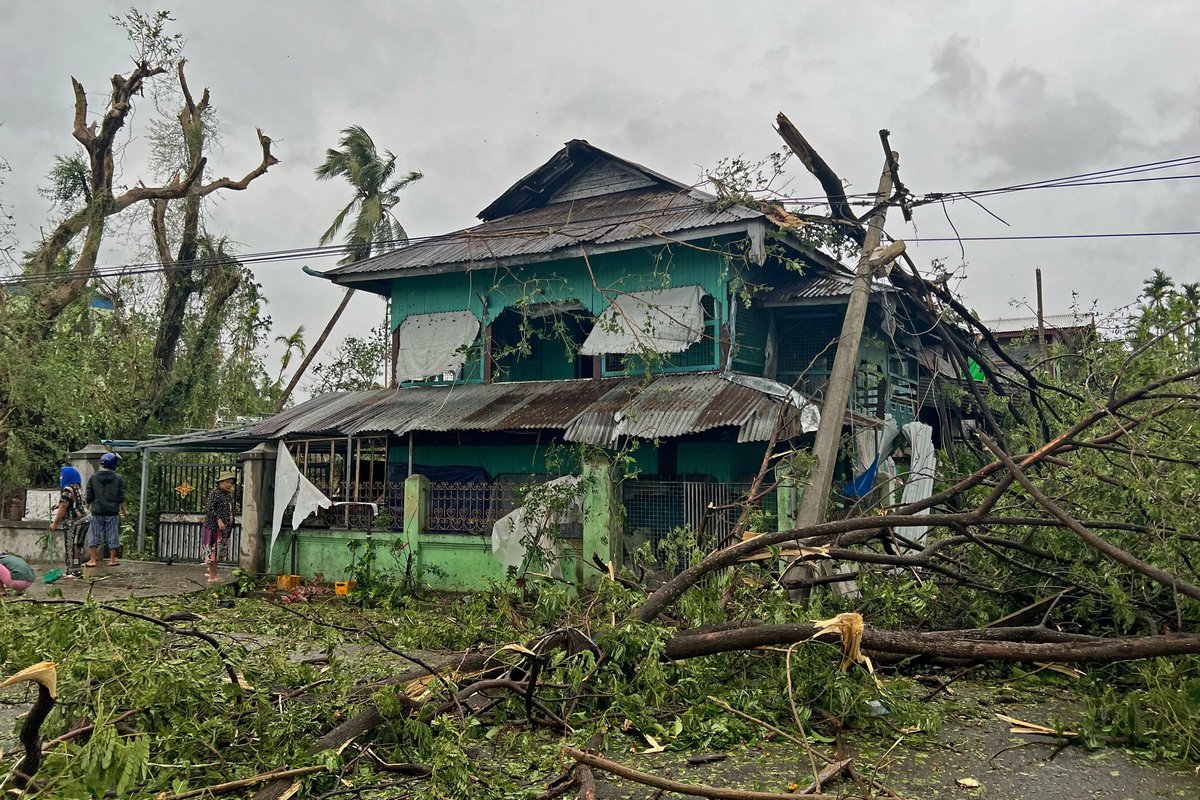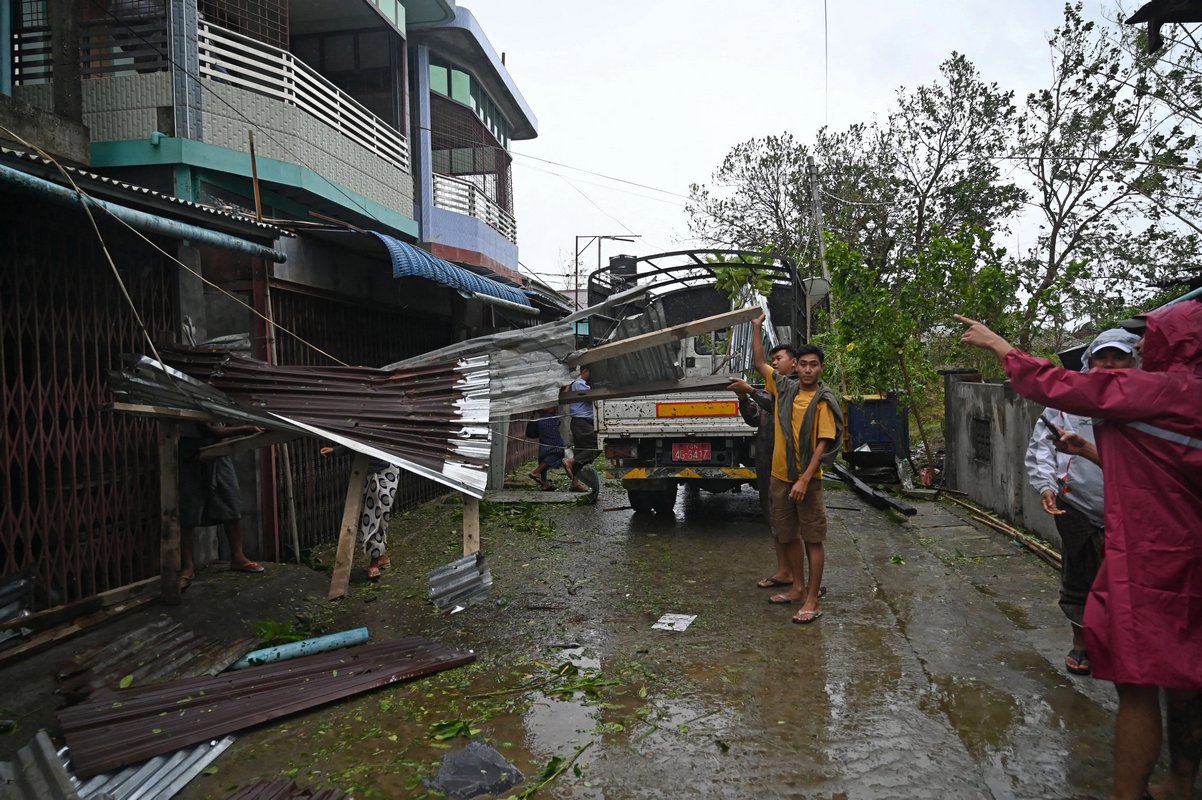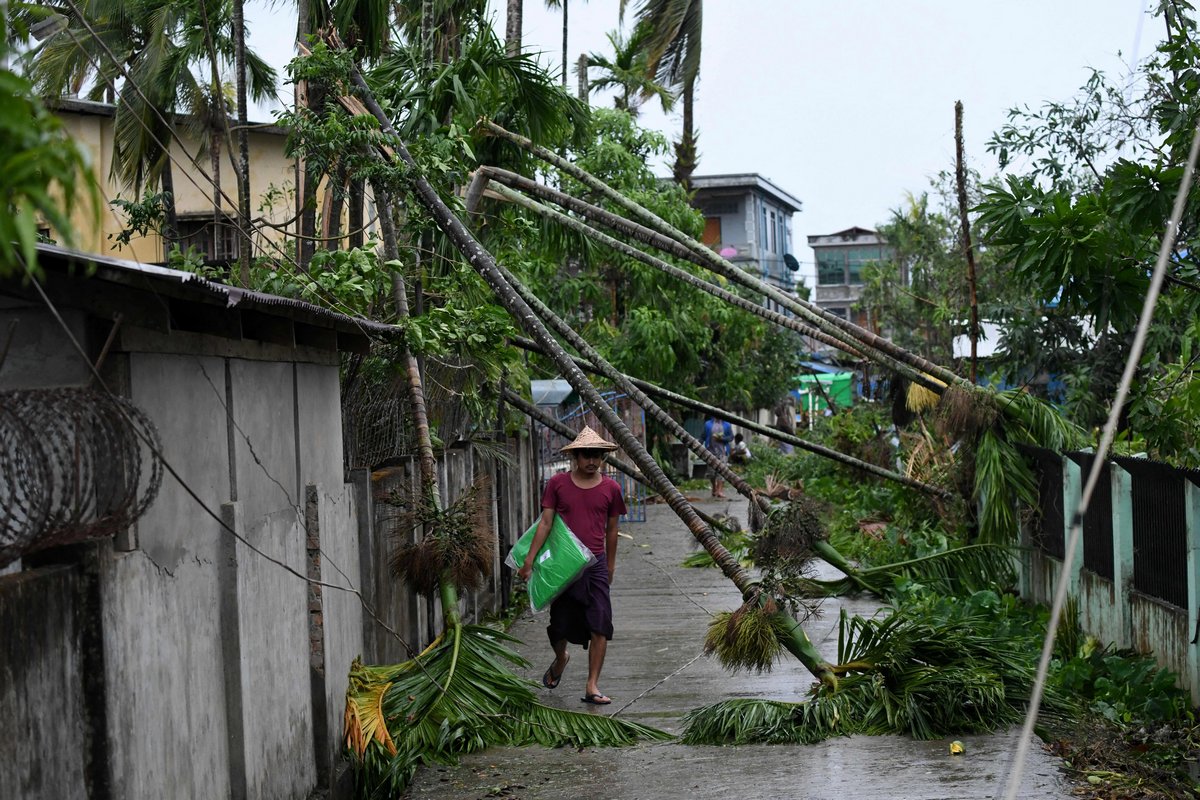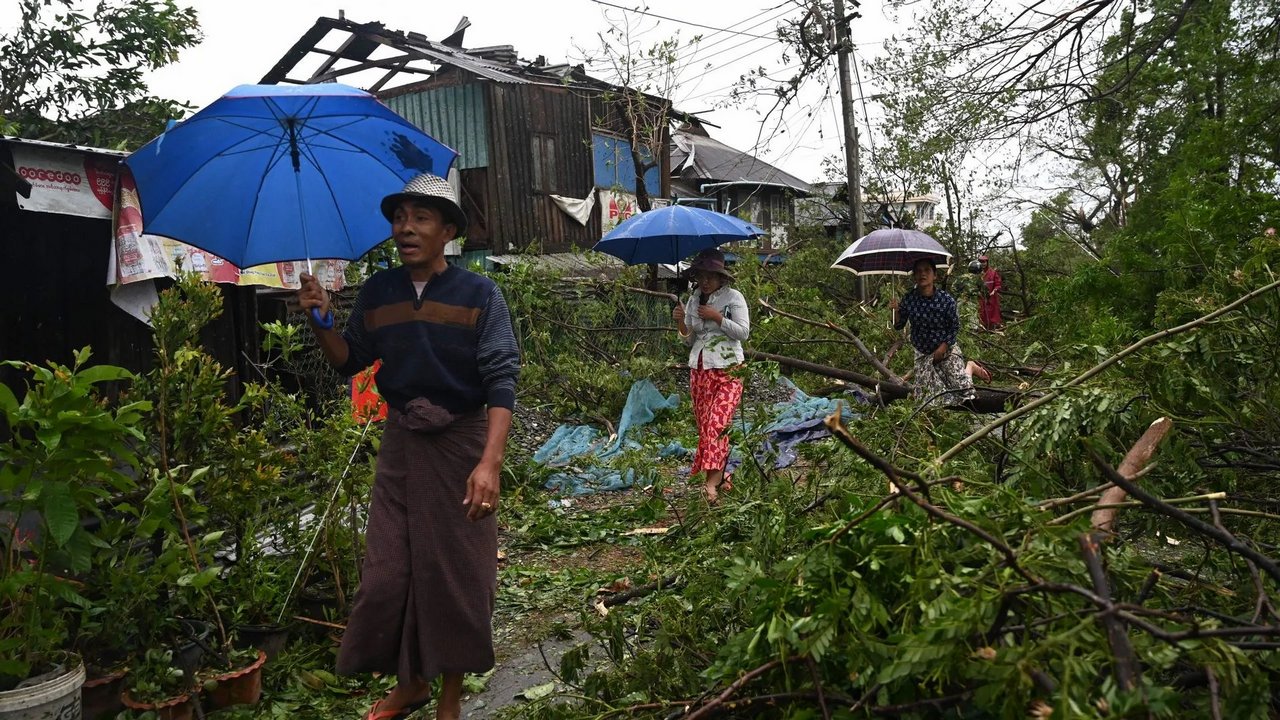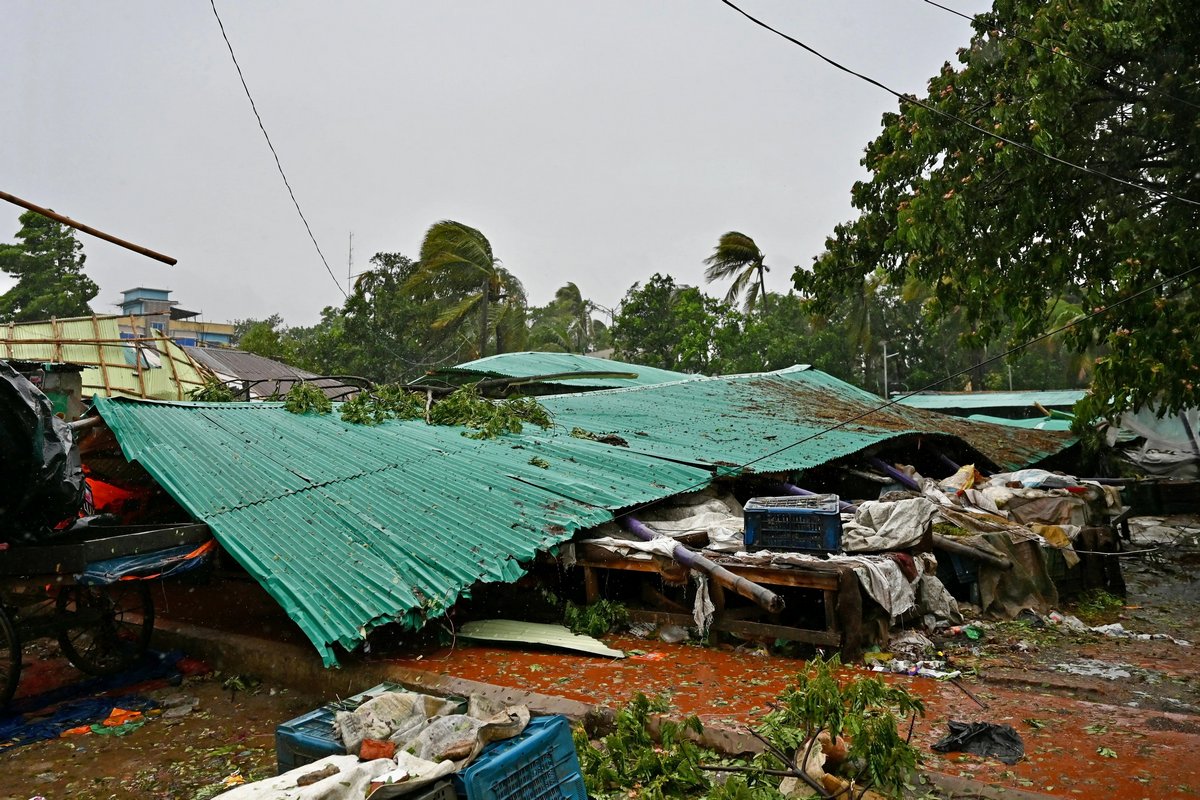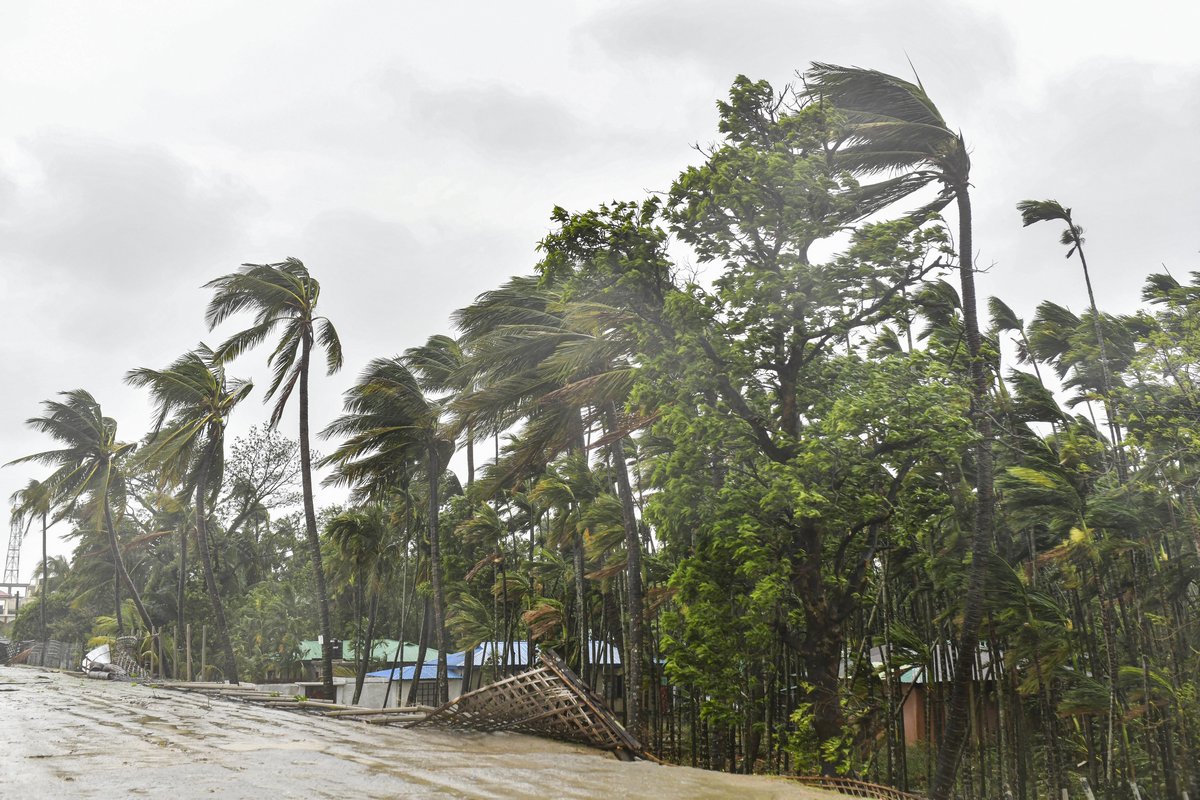Cyclone Mocha lashed Myanmar’s Rakhine state on Sunday with devastating winds and heavy rain, killing at least six people and causing extensive damage, the UN and local media reported.
The big picture: The storm, which packed maximum sustained winds of 155 mph as it moved ashore just north of the port city of Sittwe, disrupted telecommunication networks, making it hard to know the extent of the destruction. But there were early reports of “significant damage,” OCHA said late Sunday local time.
The “needs among already vulnerable communities, particularly displaced people, will be high,” the UN aid office added. Hundreds were injured, reported AP, citing the leader Rakhine Youths Philanthropic Association.
Before communications channels were knocked out, videos and images posted online showed winds thrashing structures and homes, roofs being ripped off of buildings, and heavy rains. Storm surge flooding was reported in low-lying areas of Rakhine state.
“Mocha has made landfall. 2m people at risk. Damage and losses are expected to be extensive. We are ready to respond and will need unhindered access to all affected communities,” tweeted Titon Mitra, the UN Development Program representative in Myanmar on Sunday.
Zoom in: More than 6 million people across Myanmar, including hundreds of thousands of displaced people in Rakhine state, were already in need of humanitarian assistance before the storm hit on Sunday, the UN estimated.
Thousands took refuge in shelters in Sittwe before the storm moved ashore, AP reported, citing a local volunteer.
“The whole northern Rakhine has suffered severe damage,” said Khine Thu Kha, a spokesperson for the Arakan Army, an ethnic militia that controls parts of Rakhine, per Reuters. “People are in trouble.”
UNHCR tweeted on Monday that with “shelters destroyed and sites waterlogged, the most vulnerable, including Rohingya and Rakhine IDPs, need of emergency aid and protection. The cyclone may have left but the monsoon rains will come next.”
The UN is urging the international community to inject funds into its UN humanitarian response plan for Myanmar, which was less than 10% funded before the storm hit.
Zoom out: Coastal areas in southeastern Bangladesh also saw devastating winds and heavy rains.
There was a particular concern for the nearly 1 million Rohingya refugees living in sprawling camps in Cox’s Bazar, Bangladesh. Many fled their homes in Myanmar’s Rakhine state after the country’s military in 2017 intensified a bloody campaign against the mostly Muslim ethnic group.
There were reports of damage to homes and other structures, but it appeared the camps were largely spared, per Reuters. Rohingya volunteers, government officials and aid groups for days prepared for the storm, including moving some refugees living in low-lying areas to sturdy shelters.
“Timely evacuations of people at risk to communal shelters in the refugee camps, led by Rohingya refugee first responders with the support of the [government] & humanitarian agencies, helped save lives during #CycloneMocha,” UNHCR in Bangladesh tweeted.
Still, local aid groups warned that the risk of landslides in the area remained high.
State of play: “Cyclone Mocha’s bursts of rapid intensification stood out in the region’s storm history,” according to Axios’ Andrew Freedman.
“Climate change has been linked to an increase in both the occurrence and rate of rapidly intensifying storms in many ocean basins,” Freedman reported, adding that “a detailed study of climate change’s possible role in Cyclone Mocha’s intensification would need to be completed in order to make more definitive conclusions.”
Scenes in Rakhine state after Cyclone Mocha hit.
 Alghadeer TV Alghadeer TV
Alghadeer TV Alghadeer TV
